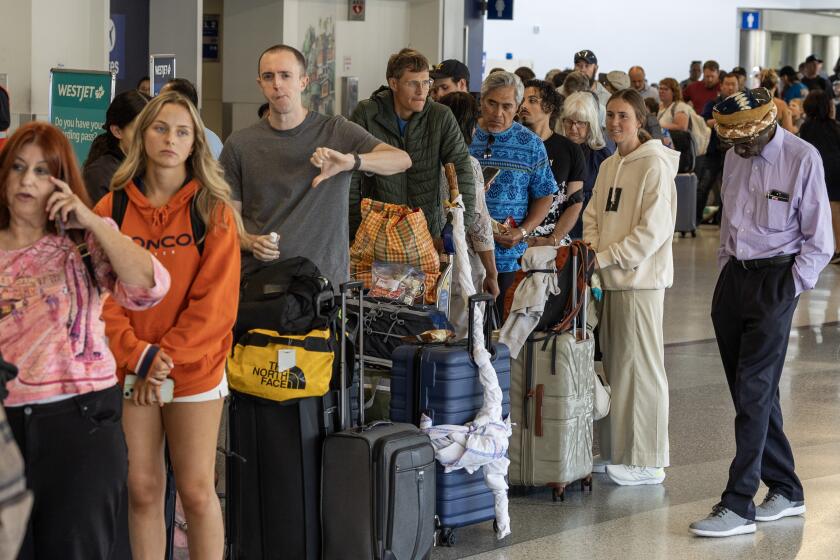Hollywood Still Plagued by Blight, CRA Report Says
After nearly 17 years of city government efforts to redevelop Hollywood, at a cost of $220 million, the area remains significantly blighted with at least 73% of properties requiring repairs or major rehabilitation, a city study has concluded.
The report by the Community Redevelopment Agency said that crime, depressed property values and high vacancy rates also remain serious problems for the 1,100-acre area.
For the record:
12:00 a.m. May 15, 2003 For The Record
Los Angeles Times Thursday May 15, 2003 Home Edition Main News Part A Page 2 National Desk 1 inches; 35 words Type of Material: Correction
Dolores del Rio -- A caption accompanying an article about the revitalization of Hollywood in the April 30 California section incorrectly spelled the first name of the late film star Dolores del Rio as Delores.
The city report will be considered today by the Los Angeles City Council as it votes on whether to extend the CRA’s eminent domain powers to force the sale of rundown properties.
“The project area remains a blighted area,” said the CRA report, which argued for additional redevelopment authority.
CRA critics oppose the extension, saying that the agency has largely failed in its mission to revitalize the area and should not be allowed to divert more taxes from police and fire services to private developers.
“They haven’t revitalized Hollywood,” said resident Don Lippman. “They haven’t accomplished anything that wouldn’t have happened without them.”
Chris Shabel of the watchdog group the Hollywood Project Area Committee also plans to testify today against the new powers.
“They’ve done a very, very poor job,” she said. “They have wasted so much money in Hollywood.”
Others said that enough has been accomplished to justify continued aggressive work by the redevelopment agency.
“We feel we are at a really good point now, but we are not there yet,” said Christi Van Cleve, board chairwoman of the Hollywood Chamber of Commerce.
The Hollywood redevelopment project, which was approved by the City Council in May 1986, includes an area generally bounded by La Brea Avenue on the west, Serrano Avenue on the east, Franklin Avenue, the Hollywood Freeway and Hollywood Boulevard on the north, and Fountain Avenue and Santa Monica Boulevard on the south.
Under state law, property tax revenue generated by increasing property values in the area can be used by the CRA to provide financial incentives to developers who build there, including the purchase of land for residential and commercial construction.
However, the power of eminent domain expired in 1998, and CRA officials are asking for restoration of their authority to force property owners to sell their parcels to the agency. A project to develop the area around the subway portal at the corner of Hollywood and Vine Street is one where eminent domain may help assemble properties, officials said.
CRA officials said there are positive signs that the area is being revitalized. They said that more than 1,000 affordable housing units have been built or rehabilitated, and that there has been more than 600,000 square feet of commercial development, including the Hollywood & Highland shopping and entertainment center that is home to the Academy Awards.
That project and the completion of the subway line through Hollywood are “catalysts” to revitalize the rest of the area, Van Cleve said.
However, the study being presented to the council today, including data on blight collected in the last three years, indicates that much more remains to be done, officials said.
The report said that a survey found 12% of structures in sound condition, which means no repairs are required. An additional 23% of properties suffer from deferred maintenance, which means that they need minor repairs; 2% are dilapidated; and 48% are deteriorated.
In the latter category, 11% of properties need extensive rehabilitation and 37% need moderate rehabilitation, the CRA report said. Finally, 15% of the structures could not be evaluated because they were not accessible.
Many storefront buildings are obsolete as commercial spaces, and residential buildings are not much better off, the report concluded.
More to Read
Sign up for Essential California
The most important California stories and recommendations in your inbox every morning.
You may occasionally receive promotional content from the Los Angeles Times.







